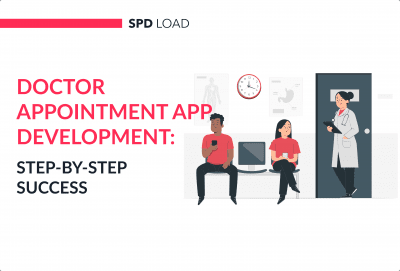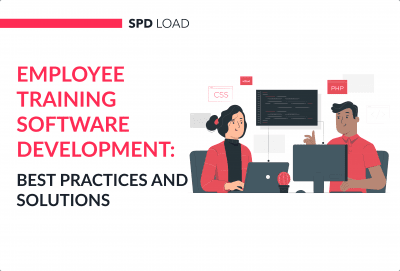13 Mobile Application Development Trends
- Updated: Aug 27, 2024
- 9 min
Mobile apps have come a long way in the last decade. What used to be accessible only on desktop computers can now fit in the palm of your hand.
And the mobile movement is only growing – the number of global mobile users is expected to hit 7.49 billion by 2025, making the mobile app development market highly competitive.
This article reveals the top 13 trends that will be hot in mobile app development for 2025, from leveraging advanced features like AI to optimizing for folding displays.
Read on for the essential 2025 forecast!
Picking the right partner is crucial — here’s how to choose an app development company that fits your needs.
Start your journey with our expert developers today to bring your app idea into reality!
1. Agile Development Gets Even Faster
Agile development is a mobile app development trend that is here to stay.
This methodology enables developers to deliver high-quality apps quickly and efficiently.
What’s more, agile development promotes continuous feedback from stakeholders, which helps ensure that the final product meets their needs.
Agile development has become one of the most popular trends in software today.
Moreover, agile development is integral to what makes up an agile team.
The term refers to a cross-functional group of people who are well-versed in both the technical aspects of software design and the business side of things.
An agile team usually works on projects concurrently; they’re able to adapt quickly when issues arise, and they do not allow scope creep or delays to impede progress.
All these qualities make agile development an ideal approach for modern mobile app development.
Appropriate equipment is also important when implementing new software trends and agile methodologies.
This might include but is not limited to registering for an app domain which enables app developers to promote their app via an associated website.
Since the majority of prominent industries require a professional domain or website, respectively, this might be the convenient choice in order to introduce one’s app to a wider audience.
2. Locking Down Security
Mobile app development will continue to be a hot topic, and with good reason. According to statistics, there are now over 3.5 billion active smartphone users worldwide. But as the use of mobile apps continues to grow, so does the need for better security.
With that in mind, security features are being introduced in mobile app development to prevent cases of hacks and theft, especially in the online gaming community.
One notable security feature is multi-factor authentication.
Multi-factor authentication is a form of two-factor authentication where at least two out of three types of credentials must be provided. For example, your password may be one factor, and your phone or fingerprint another factor (biometric).
If someone tries to access your account without providing all three factors, they’ll be denied access.
You could even consider some type of passwordless authentication, like magic links, to add even more security.
With this feature considered, it seems evident that adding more robust security measures should be a priority for many companies developing mobile applications moving forward.
3. Elevating UX/UI
In the world of mobile app development, there is now a greater focus on user experience (UX) and user interface (UI) than ever before.
This is because displays commonly encounter errors like display resolution greyed out.
Also, people nowadays are using their smartphones for more than just making calls and sending texts.
They are using them for tasks such as shopping, banking, and even entertainment.
As a result, app developers must ensure that their apps are easy to use and visually appealing.
The functionality can be complex or simple, but it needs to have been designed with the end-user in mind.
This focus on UX/UI has led to another trend: the popularity of micro-interactions between different devices like a smartphone and a smartwatch.
Developers can now create interactions between these devices without needing to build an entirely new application, saving time and money.
With all this attention being paid to UX/UI, many software companies have been incorporating these principles into their products from day one by creating user flows and wireframes with design at the forefront.
This new focus has also led to some very innovative ideas for how best to engage users by enhancing features that can be overlooked by other software companies – like colors!
4. Node.js & MEAN Stack Take-Off
Node.js is a server-side JavaScript platform that enables developers to build scalable, real-time applications.
The MEAN stack, on the other hand, is a collection of open-source technologies (MongoDB, Express.js, AngularJS, and Node.js) that provide a complete web development framework.
These two technologies are becoming increasingly popular due to their ability to provide high performance and robustness.
For example, the MEAN stack offers a low-cost alternative to traditional software with an agile development environment.
Node.js also has the advantage of being able to run code on either the client or server without having to choose between the two – this can be beneficial for running computationally intensive tasks on the client’s machine instead of passing them over the network to the server.
Another benefit of Node.js is its compatibility with many existing languages like C++, C#, Java, and Python, as well as its quick integration time.
With these features in mind, it’s no wonder why more and more organizations are looking to adopt Node.js into their tech stacks!
5. Enterprises Invest in Mobile Apps
Enterprise mobile app development is no longer a trend; it’s a necessity.
With BYOD and more devices on the market, enterprise mobility is no longer a luxury but rather an essential part of business strategy.
To be successful, businesses need to prioritize security and focus on cost-effectiveness.
They also need to create an environment that encourages employees’ creativity as well as boosts productivity and collaboration among workers.
Lastly, they should find ways of empowering their employees by giving them the tools they need to succeed while they’re on the go so that they can reach their full potential without sacrificing efficiency or productivity.
Expertise gap? Let's bridge it together. Share your needs and elevate your team with our experts.
6. Blockchain Makes Its Move
The integration of blockchain technology into mobile apps is one of the most talked-about trends in the industry.
While there are still some challenges to overcome, such as scalability and security, the potential benefits are huge.
Blockchain-based apps could revolutionize the way we interact with each other and with businesses, creating a more secure and efficient system. Currently, healthcare providers are using this type of app to allow patients access to their medical records.
For example, Swedish doctors have created an app that lets patients see their data, including scans and lab results.
If a patient’s doctor has permitted them, they can also see what medications they’ve been prescribed or been allergic to.
Other companies have experimented with using this type of app for peer-to-peer payments and even remote job interviews!
7. AR & VR App Explosion
The development of augmented reality and virtual reality technology is showing no signs of slowing down, and it is only going to become more commonplace in the coming years.
Check out the latest AR statistics to see its impact.
This growth is driven by decreasing costs of hardware, an increase in content and applications, and improvement in user experience.
Here are some key mobile app development advancements related to AR and VR to take note of:
- The use of virtual reality headsets will continue to expand as their price continues to decrease.
- VR devices like Google Cardboard offer a lower-cost entry point into virtual reality; however, they lack higher-end features such as positional tracking and realistic 3D rendering.
- Companies are already starting to invest heavily in the future of augmented reality, with Pokemon Go’s developer Niantic investing over $200 million into location-based games in 2017 alone.
- Despite being available on fewer devices than VR headsets, AR is poised for major expansion due to its ability to add information or images to what we see through our smartphones’ camera lenses.
8. Progressive Web Apps Push Limits
Progressive Web Apps are a type of app that combines the best of the web and the best of apps. They are fast, reliable, and engaging. Plus, they can be added to your home screen and work offline.
However, it’s important to note that you need an internet connection if you want these apps to work. At this point, PWAs still don’t offer much more than native apps do in terms of features.
But with new APIs like service workers, progressive loading strategies, and shared web caches, we might soon see a lot more innovation in this space.
A lot of people say that Progressive Web Apps are going to be one of the biggest trends in mobile app development – and we think they’re right!
Explore top 15 web application ideas to stay ahead of the curve!
9. Microservices Get Mighty
Microservices are a hot topic in the application development world and for a good reason. This architectural style allows you to build applications as a collection of small, independent services that can be deployed and scaled independently.
This can lead to increased flexibility, faster development times, and distributed tracing in microservices.
Plus, with the rise of containerization and Kubernetes, it’s easier than ever to deploy and manage microservices.
That said, it’s important to keep abreast of the key aspects of container security, since while containerization is a positive step for the deployment and management of microservices, it is not without its risks.
So long as all of the potential pitfalls and vulnerabilities are understood, the benefits and payoffs are more than enough to outweigh them for new app initiatives.
You’ll want to watch out for this trend if you’re looking for an agile way to develop your next project.
However, keep in mind that microservices also introduce new challenges such as coordination across teams and different technologies.
Make sure you have the appropriate resources before taking on this type of project.
Ever wondered how to keep your customers coming back? Discover how car wash app development can help you create a seamless experience that keeps them happy and engaged.
10. AI and Machine Learning Get Smarter
When it comes to mobile application development, AI and machine learning are two of the most buzzed-about topics.
This is because these technologies have the potential to revolutionize the way apps are developed and used.
AI is driving the need for new architecture to be built into apps that will enable companies to understand their customers better than ever before.
Machine Learning, on the one hand, has been playing an important role in helping companies improve customer service by using technology like chatbots, virtual assistants, and so on.
11. Cloud Migration and Integration
Application development is rapidly evolving, and cloud migration services are one of the hottest trends right now.
Why? Because it offers so many benefits.
Cloud migration can improve application performance, reduce costs, and increase flexibility and scalability.
Plus, it can make your applications more accessible to users by making them available on any device, anywhere in the world.
Here are the top seven reasons application developers migrate their applications to the cloud:
- It’s a better option for companies with unpredictable workloads because they don’t have to purchase expensive hardware when their needs change.
- It allows you to scale quickly as demand changes without incurring additional capital expenditures.
- You no longer need to worry about purchasing costly data center space or managing complex infrastructures.
- By shifting compute cycles from your local machine onto shared pools of computers, you can drastically decrease your energy footprint.
- It lowers maintenance costs (servers can be remotely managed).
- There are potential tax advantages (depending on how you use it).
- Your team becomes more agile, which makes scaling up and down easier than ever before.
Unleash AWS's Full Potential with Our Developers.
12. Open Source Opens Doors
With the rise of open-source projects, it’s no surprise that developers are increasingly turning to open-source solutions for their application needs.
Open source provides a number of benefits, including greater flexibility, community support, and cost savings.
While the use of open-source software has been growing steadily over the past few years, it’s expected to explode in popularity in the next few years.
13. Social Media Gets More Seamless
Apps will be getting smarter thanks to social media integration.
More people use social media than any other type of media today – it’s no surprise that they want their favorite apps to integrate with these platforms as well.
Social media integration is expected to rise significantly over the next few years as both brands and users seek greater engagement opportunities within popular apps.
2025 App Development Trends: What It All Means
The world of mobile app development moves fast. The challenge and opportunity is building the capacity to rapidly embrace these trends on mobile’s leading edge.
For businesses, keeping pace can be a challenge. You want to leverage the latest tech to stay cutting-edge, attract talent and investors, and keep customers engaged.
Our app development services are designed to help you stay ahead of the curve and create digital experiences that engage and convert. If you aim to become a mobile leader, let’s connect.












